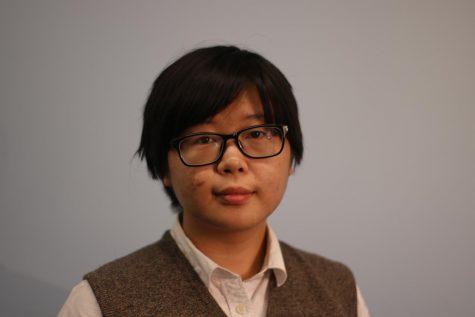Kim: Marching madness: The people behind political protests
What do you do when the people in power refuse to listen to you? Yelling loudly will not help if they are willfully ignoring you, and repeating your message will just annoy them. Albert Einstein is often credited for saying that “Insanity is doing the same thing over and over again and expecting a different result.”
Why, then, do we march?
Last weekend’s March for Our Lives brought thousands of protesters to Public Square and an estimated 200,000 to Washington, D.C. The march was in response to the Parkland shooting and its goal was to demand increased gun control. While it may be too early to judge the impact of the march, marches in favor of gun control have historically been ineffective in creating legislative change.
Following the Columbine shooting in 1999, the Million Mom March was attended by 750,000 people, the largest gun protest to date. However, despite its greater numbers, this march only inspired change in areas that were liberal and already likely to enact stricter gun laws, such as New York and California, rather than on a national scale. This calls the march’s effectiveness into question.
It’s unclear whether the march caused these new regulations or if the new regulations just happened to reflect people’s shifting attitudes, which were also reflected by participation in the march. The number of marches also may make individual marches seem less significant to legislators and populations alike. There were 19 marches in Washington in 2017, and the March for Science is coming up soon, on April 14.
Our national enthusiasm for marches is likely connected to the civil rights movement and the March on Washington in 1963. The story of Martin Luther King Jr.’s “I Have a Dream” speech is both iconic and powerful. It has been glorified in public education and held up as the ultimate model for protesters, for good reason. The march caused real shifts in attitudes. It swept up the entire nation, not just African Americans and allies.
The involvement of people is instrumental to change. A 2013 study by Andreas Madestam, Daniel Shoag, Stan Veuger and David Yanagizawa-Drott examines political protests by the Tea Party. Their study shows a correlation between the size of a political protest due to weather conditions and the impact on policy, and claims that this correlation is due to the size of the protest affecting social networks, mobilization and habits. Fair weather brings in more people, who then become more politically active, whereas bad weather draws smaller crowds and less impact on policy. Separate election studies in Britain and the United States corroborate this claim, as they show that people who participate in protests are more likely to vote than non-protesters.
This does not explain why the Million Mom March failed. They had the numbers, but not the corresponding change. Manpower alone is not enough for change. But in America, there is another powerful audience for political protests that have been largely overlooked: businesses.
Americans increasingly demand more social responsibility from the companies they buy from, and businesses react to that demand. Regarding gun control, Gucci donated to the March for Our Lives; companies like Delta Airlines and Metlife removed discounts for National Rifle Association members; and big names like Dick’s Sporting Goods and Walmart raised the age at which customers can buy guns and restricted the sale of assault rifles. It is regulation from the bottom up, and while it is not national-level change, these steps are concrete steps toward the goals of the March for Our Lives. Coupled with increased political activism by marchers, these may be enough to spark a national trend towards gun control.
Politicians may appear to have all the power, but power also belongs to people and businesses. Marches, in addition to urging politicians, should encourage and empower the ones that make change happen on smaller scales.
Won Hee Kim is a second-year English major with a minor in economics.

Won Hee Kim is a human being who is eager to escape from a fourth-year of higher education into a cold, corporate world. Case Western Reserve University...

